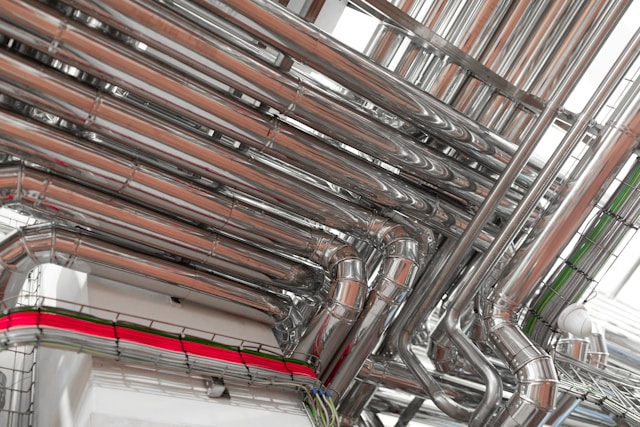Selecting the right flow meter for your industrial processes is essential to maintaining operational efficiency, ensuring product quality, and meeting regulatory requirements. With a wide range of flow meter types available, choosing the most suitable one for your specific application can be challenging. Each industry has unique demands, including accuracy, fluid type, flow rate, pressure, and environmental conditions. In this guide, we will explore the different types of flow meters, their applications, and the expertise that leading manufacturers offer to help businesses make informed decisions.
Key Factors to Consider When Selecting a Flow Meter
Before diving into the various types of flow meters, it’s important to understand the key factors that influence flow meter selection:
- Accuracy Requirements
Different industries have varying levels of accuracy requirements. For instance, pharmaceutical and chemical industries often require high-precision measurements, while water treatment plants may not need the same degree of accuracy. Understanding the accuracy tolerance of your process is essential when choosing the right flow meter. - Fluid Type
Flow meters are designed to handle specific types of fluids, including liquids, gases, and steam. It is also essential to consider whether the fluid is clean or contains particulate matter, corrosive chemicals, or other properties that could impact the meter’s performance. - Flow Rate and Pressure
The flow rate and pressure of the fluid being measured are critical considerations. Some industrial flow meter manufacturers are better suited for low-flow or high-flow applications, while others are designed to withstand high-pressure environments. - Environmental Conditions
Flow meters may be exposed to extreme temperatures, corrosive substances, or hazardous environments. It is crucial to select a flow meter that can withstand these conditions without compromising accuracy or longevity.
Common Types of Flow Meters and Their Applications
Let’s explore the most common types of flow meters and the industries they are best suited for. Each type of meter has its strengths and limitations, and leading manufacturers offer expertise in tailoring flow meters to specific industrial needs.
1. Differential Pressure (DP) Flow Meters
How They Work:
Differential pressure flow meters measure the pressure drop across a constriction (such as an orifice plate or venturi tube) to determine the flow rate of a fluid. The higher the pressure drop, the higher the flow rate.
Applications:
DP flow meters are widely used in the oil and gas, chemical, and water industries, particularly for steam, gas, and liquid applications. They are suitable for a broad range of fluid types and can handle high-pressure environments.
Advantages:
- Versatile and can measure liquids, gases, and steam.
- Applicable across a wide range of flow rates and pressure conditions.
- Well-suited for large pipelines and harsh conditions.
Considerations:
- Requires regular maintenance and calibration for accuracy.
- Can introduce significant pressure loss in the system.
2. Electromagnetic Flow Meters
How They Work:
Electromagnetic flow meters, or mag meters, operate based on Faraday’s law of electromagnetic induction. When a conductive liquid passes through a magnetic field, it induces a voltage proportional to the flow rate, which the meter then measures.
Applications:
Electromagnetic flow meters are ideal for water and wastewater treatment, as well as industries that handle slurries or conductive fluids. They are often used in mining, food and beverage, and pulp and paper industries.
Advantages:
- No moving parts, reducing wear and maintenance.
- Suitable for conductive fluids, including dirty or slurry-filled liquids.
- High accuracy and reliable performance in harsh environments.
Considerations:
- Limited to conductive fluids, making them unsuitable for gases or non-conductive liquids.
- Installation requires the meter to be fully immersed in the fluid, limiting certain configurations.
3. Ultrasonic Flow Meters
How They Work:
Ultrasonic flow meters use sound waves to measure flow. There are two primary types: transit-time and Doppler ultrasonic meters. Transit-time meters measure the time difference between the upstream and downstream flow of sound waves, while Doppler meters rely on the frequency shift caused by particles or bubbles in the fluid.
Applications:
Ultrasonic meters are versatile and can be used for both liquids and gases. They are particularly useful in industries such as water treatment, HVAC, power generation, and chemical processing.
Advantages:
- Non-intrusive design with no moving parts.
- Can be installed externally, making them ideal for retrofitting onto existing pipes.
- Suitable for both clean and dirty fluids, including slurries.
Considerations:
- Transit-time meters work best with clean fluids, while Doppler meters are better suited for dirty or particle-laden fluids.
- Performance can be affected by pipe conditions and fluid properties.
4. Coriolis Flow Meters
How They Work:
Coriolis flow meters measure the mass flow of a fluid by detecting the twisting or deflection of the meter tube caused by the fluid’s inertia as it flows through a vibrating tube. The degree of deflection is proportional to the mass flow rate.
Applications:
Coriolis flow meters are commonly used in the oil and gas, chemical, pharmaceutical, and food industries. They excel in measuring the mass flow rate of both liquids and gases and are especially valuable when precise mass measurement is required.
Advantages:
- Extremely accurate, making them ideal for critical applications.
- Measures both mass flow and density, offering versatility in process control.
- Works with both liquids and gases, even in challenging conditions.
Considerations:
- More expensive than other types of flow meters.
- High-pressure drop and may not be suitable for low-flow applications.
